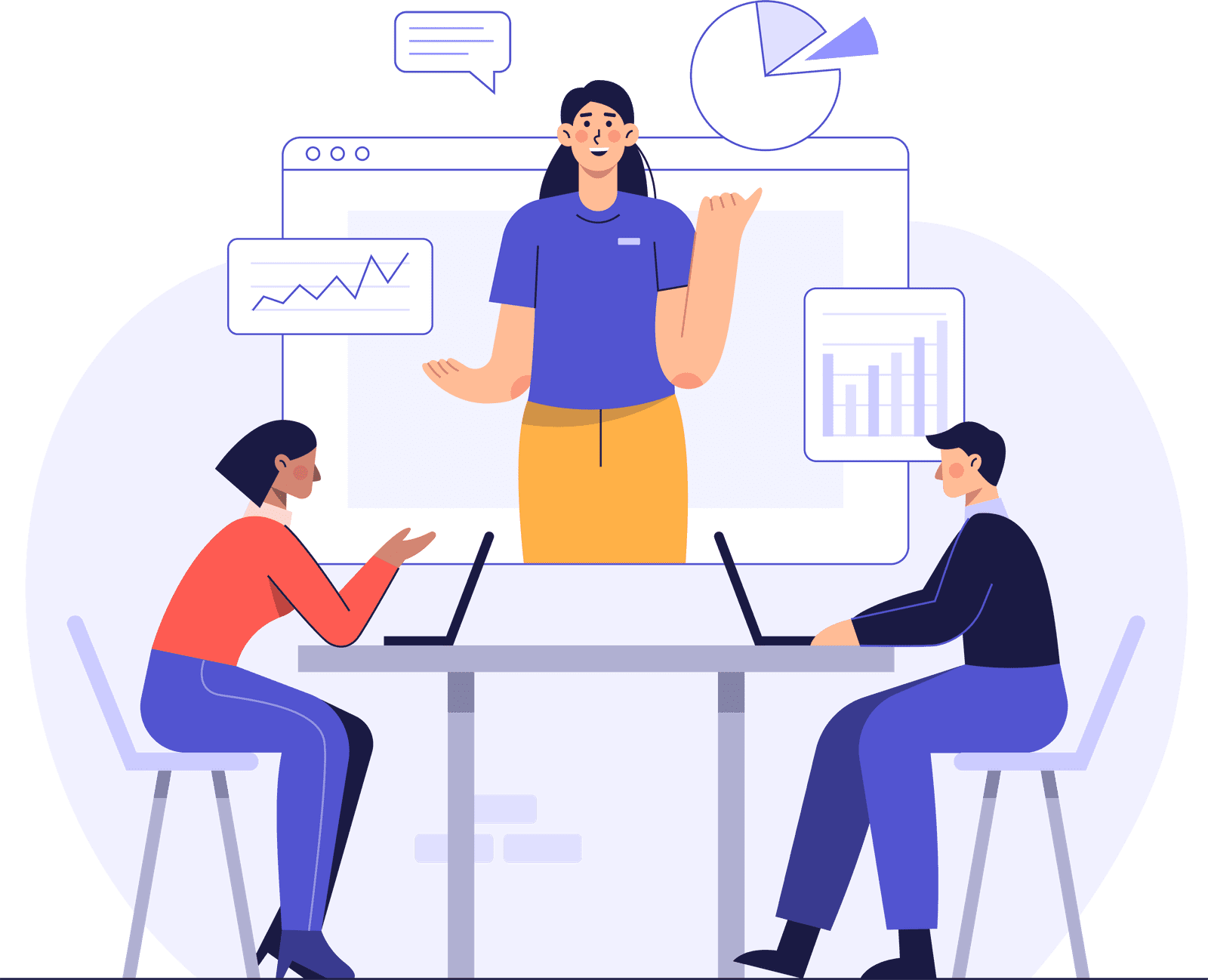Prerequisites
To apply for the SAP ABAP Training, you need to either:
- Should have basic computer knowledge
- Proficiency in using operating systems like Windows.
- An aspirant should have basic skills in database concepts and SQL.
- Basic programming skills (depending upon the course).
- Aspirants should have good knowledge of SAP software and its various modules.
Course Curriculum
In this module, you will learn about the various concepts, such as:
Module 1: Introduction to ERP
- What is ERP?
- Why do we need ERP?
- Advantages of ERP
- Major ERP Packages
Module 2: Introduction to ABAP/4
- What is ABAP?
- Logon to SAP Environment
- Transaction Codes
- Multitasking Commands
- Comments
- Errors
- ABAP/4 Editor ( SE38 )
- Steps for Creating a Program
- Elements in R/3 Screen
- Out put Statements
- Operators in ABAP
- Data, Parameter & Constant Statements
- Data Types & Classification
- Data Objects & Classification
- Text Elements
- String Operations
- Control Statements
- Field strings
Module 3: Introduction to SAP & R/3 Architecture
- What is SAP?
- History & Features of SAP
- SAP R/2 Architecture (Limitations of R/2 Architecture)
- SAP R/3 Architecture (Types of work processes)
- SAP R/3 Application Modules
- SAP Landscape
Module 4: Packages
- Creating a package
- Difference between local objects & packages
- Transferring local objects to packages
Module 5: ABAP Dictionary
- ABAP Dictionary Introduction
- Data Dictionary Functions
- Data Dictionary Objects
- Database Tables
- Structures
- Views
- Data Elements
- Type Groups
- Domains
- Search helps
- Lock objects
- Primary Key And Foreign Key
- Table Maintenance Generator
Module 6: Variants
- Variants Introduction
- Creating variants in ABAP Editor & Data Dictionary
Module 7: Election Screens
- Selection screen Introduction
- Parameter Statement
- Select-options Statement
- Selection-screen Statement
- Screen table and its fields
- Dynamic screen modification by using Modif Id key
Module 8: Message Classes
- Message Class Introduction
- Message types
- Calling message class in Report & Dialog programs
Module 9: Internal Tables
- Select
- Internal Tables Introduction
- Declaring Internal Table
- Populating Internal Table
- Processing Internal Table
- Initializing Internal Tables
- Inner Joins And For All Entries
- Control Break Statements
Module 10: Open SQL Statements
- Select
- Insert
- Modify
- Update
- Delete
Module 11: Debugging Techniques
- Debugging Techniques Introduction
- Break-points (Static & Dynamic)
- Watch points
- Dynamically changing internal tables contents in Debugging Editor
- Options to step through the program in Debugging Edi
Module 12: Reports
- Reports Introduction
- Classical Reports
- Interactive Reports
- Techniques Used For Interactive Reports
- Hotspot
- Hide
- Get Cursor
Module 13: ALV Reports
- ALV Reports Introduction
- ALV through Function Modules
- ALV Types
Module 14: Modularization Techniques
- Modularization Techniques Introduction
- Includes
- Subroutines
- Passing Parameters to Subroutines
- Passing Tables to Subroutines
- Function Groups & Function Modules
Module 15: Dialog / Module Pool Programming/ Transactions
- MPP Introduction
- Relationship between Screen, Flow Logic and Program
- Flow Logic Events
- Process Before Output (PBO)
- Process After Input (PAI)
- Process On Value Request (POV)
- Process On Help Request (POH)
- Include Programs in MPP
- Include TOP
- Include I01
- Include O01
- Include F01
- Dynamic Screens
- Leave Screen
- Leave to Screen
- Call Screen
- Set Screen
- Processing of List from Transaction and Vice Versa
- Elements in Screen Layout
- Table Controls
- Step Loops
- Tabstrip Controls
- Subscreens
Module 16: SAP Scripts
- SAP Scripts Introduction
- Components of SAP Scripts
- Layout Set
- Standard Text
- Out Put Program
- Modifying Standard SAP Script Layouts
- Including Logos
- SAP Script Utilities – Upload / Download
- Smart Forms Introduction
- Graphics Management
- Style Maintenance
- Paragraph Formats
- Character Formats
- Writing print program and designing layouts
Module 17: Batch Data Communication
- BDC Introduction
- Recording
- BDC Methods
- Call Transaction Method
- Session Method
- Handling Table Controls in BDC
- Legacy System Migration Workbench
- Different Methods
- Flat file creation
- Uploading data
- File Handling
- Application Server
- Presentation Server
Module 18: Smart Forms
- Smart Forms Introduction
- Graphics Management
- Style Maintenance
- Paragraph Formats
- Character Formats
- Writing print program and designing layouts
Module 19: RFC
- Introduction to RFC
- Creating RFC Destination between 2 Systems
- Creating Remote Enabled Function Modules
- Creating program using Remote Enabled Function Modules
Module 20: Runtime Analysis & SQL Tracing
- Cross Applications
- Introduction to Distributed Environment
- Introduction to Cross Applications
Module 21: ALE
- ALE Basics
- Overview of Outbound & Inbound Process
- Configuration Steps
- Define logical systems
- Assign client to logical System
- RFC destination
- Customer distribution model
- Creating Ports
Module 22: EDI
- EDI Basics
- Difference between ALE & EDI
- Overview of Outbound & Inbound Process
- Configuration Steps
- Port Creation
- Partner Profile Creation
Module 23: User Exits
- User Exits Overview
- Types of User Exits
- Field Exit
- Screen Exit
- Function Exit
- Menu Exit
Module 24: IDocs
- Explore about the Idocs
- Understand how IDocs are stored in database
- Exploring the structure of IDocs
- Types of IDocs
- IDOC views
- Inbound and outbound processes associated with IDOC
Module 25: BAPIs
- BAPI Overview
- Creation of BAPI
Module 26: BADIs
- BADIs Overview
- Defining a BADI
- Implementing a BADI
Module 27: OOPS Concept
- Object Oriented ABAP Overview
- Defining a Class
- Implementing a Class
Module 28: What is workflow?
- Overview of workflow
Module 29: Related and Additional Topics
- Correction & Transport request (CTS)
- Transport Organizer
- Workbench Request
- Task Creation
- Release Objects
- SAP Memory & ABAP Memory
- Logical Database
- SD Flow
- MM Flow
Module 30: Conclusion
- Summarize all the points discussed.







